14 Types of Poppies to Enhance the Beauty of Your Garden
Author: Jen Worst | Editor: Omar Alonso
Review & Research: Jen Worst & Chris Miller
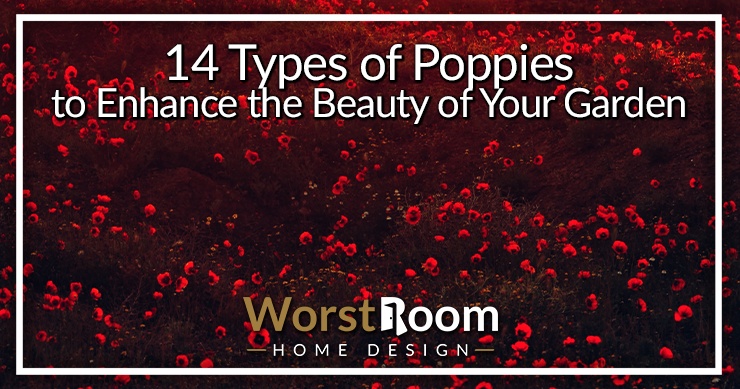
Colorful and brilliant, any types of poppies will add a whole new level of beauty to any flowerbed. With silky, translucent petals that resemble stained glass when the sun shines through them, poppies are among the easiest flowers to grow and deceptively fragile—these little flowers can be quite hardy.
Cultivated since times immemorial, poppies are the whole package—the seeds have been eaten, used as medicine, or you can just let the flowers be and admire their beauty.
These flowers have also been the symbol of a range of things, from war to memory to fertility to luxury and have their place in many paintings, myths and poetry of yore. Even in the United States, the Friday before Memorial Day is now National Poppy Day.
14 Types of Poppies
Defying common misconception though—that poppies are only of the intoxicating kind—poppies exist in many varieties. Whether you want to cook them, eat them, or grow them, here’s the lowdown on the different types of poppies that exist.
Opium Poppies
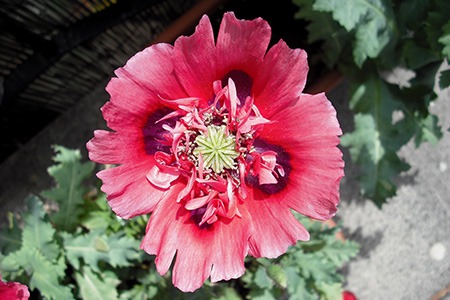
Let’s start with the most controversial one—the opium poppy, also known as breadseed poppies. Once famous for their medicinal properties, these flowers are now infamous for their intoxicating effects.
Opium poppies come in a range of colors and types, such as the Drama Queen, a fringed poppy with indigo and crimson petals and a pale green center, or the Sujata which isn’t used commercially for latex or opioid production.
Opium poppy seed pods, once dried, are also a popular choice in floral arrangements. Due to their use as no-no substances, growing opium poppies in some regions may not be in accordance with local law, so always check before you decide to add poppies to your flowerbed. You can, however, sell or eat the seeds in muffins and types of bagels.
Corn Poppies
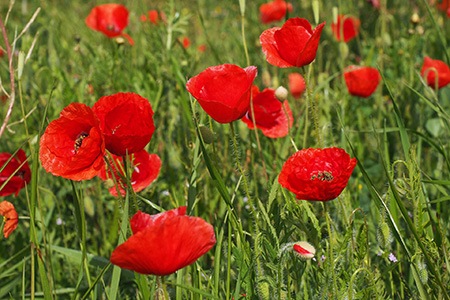
Corn poppies are the most commonly found poppy variety, extremely easy to grow and available in a variety of colors—lilac, white, red, yellow, pink and salmon, or even dual colors. Corn poppies blossom annually and can have single, double, or semi-double flowers.
Corn species of poppies come in many varieties, such as Angel’s Choir with its lovely pastel hues, or the more popular Red Flanders poppy that is immortalized in the World War I remembrance poem—John McRae’s In Flanders Fields.
These wild red corn poppies are also known as ‘Legion of Honor’ poppies—these poppies were the first flowers to grow in the blood-soaked fields of the Western Front and as a custom, are still worn in honor of the fallen troops, their simple elegance symbolizing the sacrifices of war.
Another popular variety is the Shirley poppy with its silky petals, as is the Pandora, with its mid-sized semi-double or double flowers in red, sometimes featuring gray streaks.
Celandine Poppies
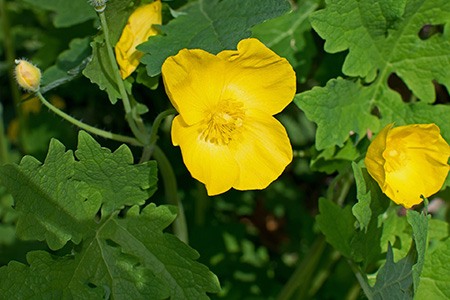
Celandine poppies species feature bristly stems and wavy-edged and lobed leaves. The flowers of this poppy variety feature four long yellow petals—a unique characteristic.
Multiple flowers grow on each stem, making the plant look like a bouquet in itself—a reason for its popularity among florists. The beautiful yellow hues go great with the purple types of lavender you may have in your flower bed.
Celandine types of poppies come in three main species that are native to the eastern, central and western regions of China. The ones in the United States can grow up to 1.5 feet, with their yellowish-orange flowers adding splashes of color to the forest floors where they grow.
Due to their limited presence in Canada, there are efforts to conserve these flowers under Canadian laws.
Romneya Poppies
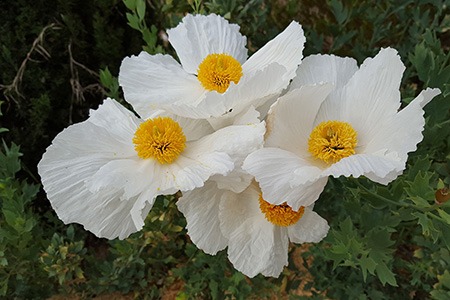
Also known as Matilija poppies, Romneya poppies are tree poppies native to California and Northern Mexico.
These poppy types grow on perennial subshrubs, with white blooms and woody stems that resemble trees. These plants can grow up to 8.2 feet and feature silvery-green leaves with hairy fringes and deep cuts.
Romneya poppies generally bloom in the summer, earning them the moniker ‘fried egg flower’. These flowers are the largest in the poppy family and thrive in warm, sunny climes and soil with good water drainage.
Though Romneya poppies are initially hard to cultivate, they grow really well once they adapt to the surroundings—they can even grow in burned areas, which earns them the nickname ‘fire followers’.
Dwarf Poppies
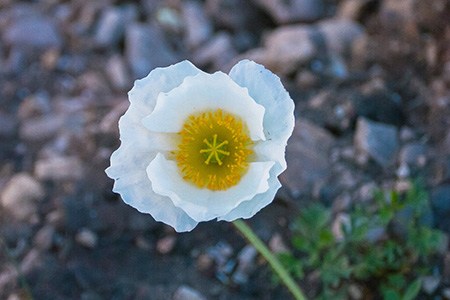
Also known as Alpine poppies (since they’re native to the Alps region), dwarf poppies are commonly found in Austria. These perennials are short and small-leafed, growing upright and reaching anywhere between 5 and 20 cm in height.
These different types of poppies produce latex and are very pleasantly fragrant, making them a favorite ornamental option. Dwarf poppies, owing to a strong taproot system, can survive very well in rocky areas.
California Poppies
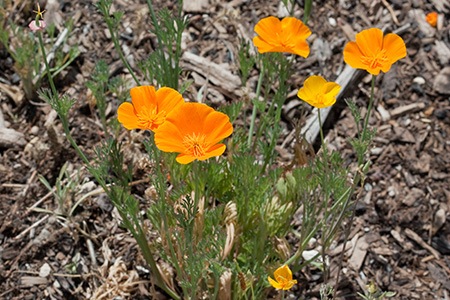
The classic California poppy heralds the onset of spring, thriving in hot and dry areas that require a lot of resilience to conquer.
California poppies are most commonly found on neglected land, native to the United States’ West Coast. California poppies grow in shades of orange, purple, pink, yellow, and cream. This is very similar to many types of irises in color.
One of the most popular poppy varieties of the California poppy is the California Watermelon Haven—its crepe-paper-like petals, pale cream center and watermelon pink hue make it a popular showpiece variety.
These plants are quite short and perennial, which makes them ideal for container plants.
Iceland Poppies
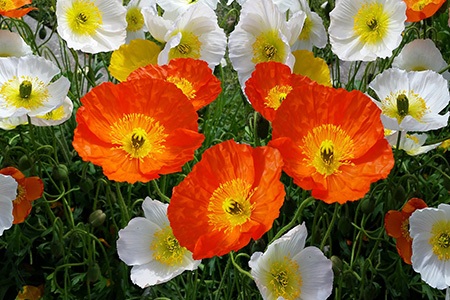
Iceland poppies are among the harder poppies to cultivate. Though they’re perennial, they don’t do very well in hot climates due to their inability to tolerate heat. Therefore, many folks grow them as annuals in the States.
Iceland poppy types are a mix of pastel shades such as orange and pink, as well as whites and yellows. These poppies last longer in most types of vases than others, making them the preferred choice of poppies for cut flowers.
Oriental Poppies
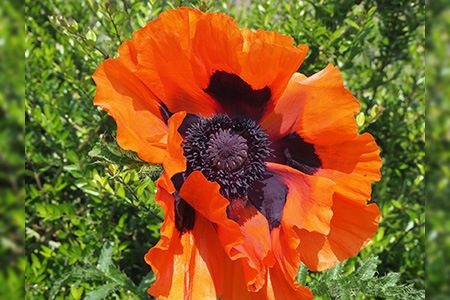
Oriental poppy varieties have huge blooms, with flowers measuring 10 inches across. These flowers are often perennials, doing well in cold, harsh climates.
Oriental poppies come in a range of lively colors, with a black patch at the petals’ base. Oriental poppies bloom during the early summer or late spring days. My mom loves to grow oriental poppies next to various types of dahlias due to the similarity in size and the explosions of color.
A popular variety is the Goliath, with its traditional bell-shape and vibrant orange-red flowers. The Central Park and Patty’s Plum are two other popular poppy varieties, with ruffled blooms and dark centers.
Fire Poppies
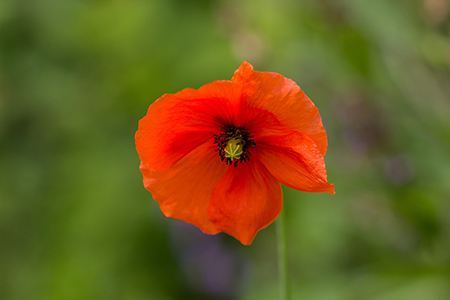
Fire poppies are native to Southwestern and Central Western California, thriving in woodlands and other similar habitats, especially in areas that have recently burned, earning them the name ‘Fire Poppy’.
Fire types of poppies are annual herbs with four orange petals that are thin and delicate.
Ice Poppies
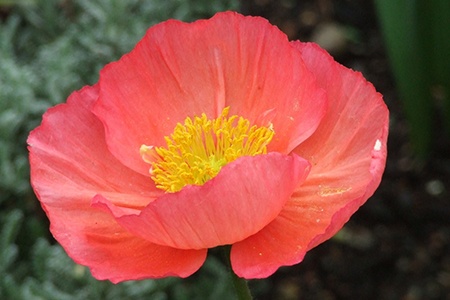
The ice poppy, on the other hand, is commonly found on rocky slopes, pastures, meadows and landfill sites.
These can be perennial or biennial plants, with blue-green leaves, when they do have leaves and thin hair. These poppies generally have four wide petals that can be orange, yellow, white, or red—a popular ornamental for these colors.
Hungarian Breadseed Poppies
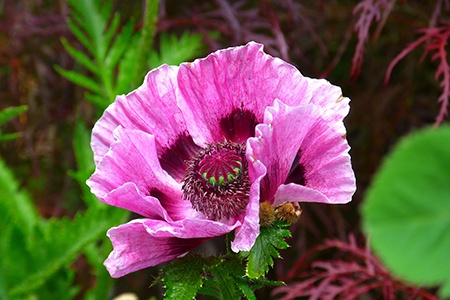
Despite the relatively profound-sounding name, the Hungarian Breadseed is named so simply for the crunchy black seeds that are a favorite in bread in Hungary and other countries of Central Europe.
Each flower has thousands of seeds in it but the lovely lilac-pink petals are another reason to grow these flowers.
Hungarian Breadseed poppies, once dried, feature in many floral arrangements and wreaths and can last really long periods.
Himalayan Poppies
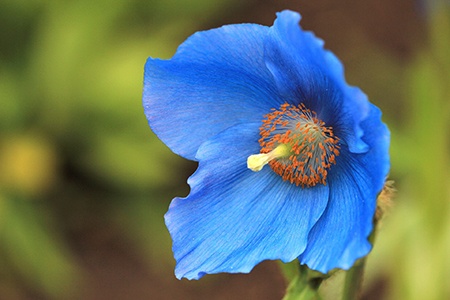
Himalayan poppy plants feature lovely blue flowers and like Iceland poppies, are extremely hard to cultivate. Native to the Himalayas in India, these poppies require the same kind of terrain to grow and thrive, which includes well-drained, evenly moist soil and some amount of shade.
However, Himalayan types of poppies are rather short lived for perennials.
Prickly Poppies
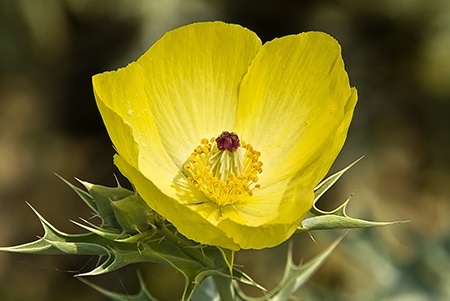
Also known as Argemone, prickly poppies grow widely over Hawaii and the United States.
There are at least 32 species of prickly poppies, with the Mexican prickly poppy being the most common and adapted to growing around the world.
These poppies are quite hardy, thriving even in drought and poor soil conditions. Their bright yellow color makes them very attractive but they’re dangerous to grazing animals.
Prickly poppies have been used for their medicinal properties for decades now by indigenous communities. The Seri of Mexico, for example, use it to cure kidney pain.
In Spain, the plant is used as a laxative, whereas in Mali, it is used to treat malaria and in India, to treat skin conditions, venomous bites and eliminate intestinal worms.
Tulip Poppies
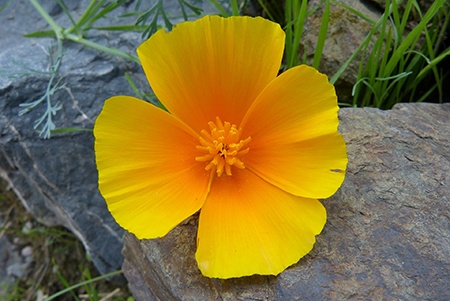
Tulip poppies are native to Mexico’s highlands, leading to them being called Mexican tulip poppies. These poppies grow in areas upward of 4,900 feet, especially thriving in the Chihuahuan Desert’s rocky terrain and roadsides.
Tulip poppies have erect woody stems that can reach up to 24 inches in height. The petals, generally four in number, are large and overlapping, yellow in color with orange anthers. To be clear, tulip poppies are not types of tulips despite the name.
Types of Poppies to Compliment Your Garden & Events
From funerals to weddings to celebrations to memories, poppies are used in a range of events and for a range of purposes.
With their beautiful flowers, these plants are a favorite for ornamental purposes and their edible seeds only increase the appeal—so go ahead and pick out a variety of the types of poppies and light up your flowerbed.



